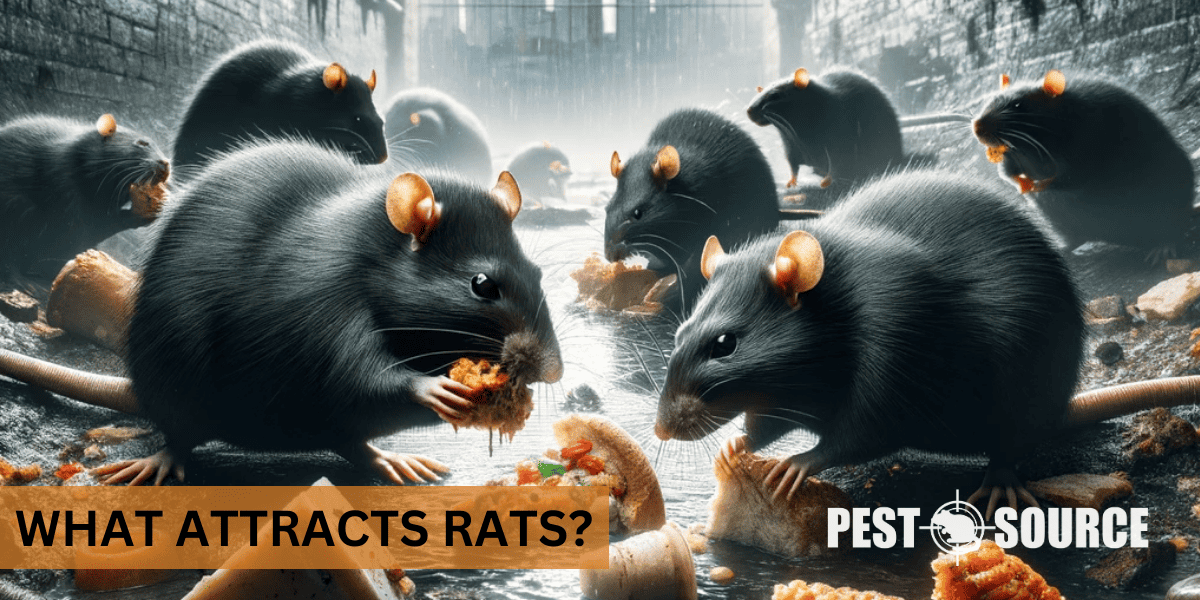Rats are primarily attracted to food, water, and shelter. This post will detail how accessible food sources, like garbage and pet food, consistent water supply, and safe nesting sites in cluttered or undisturbed areas draw rats to human habitats. Understanding what lures rats is essential for effective prevention and control, helping to minimize the chances of infestation.
POINTS
- Eliminate Attractants: Rats are drawn to food, water, and shelter, so keeping your home clean, storing food properly, and eliminating water sources can prevent infestations.
- Seal Entry Points: To keep rats out, seal any cracks, holes, or structural gaps in your home, as these can serve as entrances for rats seeking shelter.
- Recognize Infestation Signs: Identifying signs of rats, such as droppings, noises, property damage, and nesting materials, is crucial for early intervention.
- Employ Control Strategies: Use natural deterrents, traps, or professional extermination services to address rat infestations effectively.
- Differentiate Between Rats and Mice: Understanding the specific preferences and behaviors of rats versus mice can lead to more targeted and effective prevention
What Are Rats Attracted To?
Understanding what attracts rats is crucial for effective pest control. Rats are drawn to environments that provide their basic needs: food, water, and shelter. By identifying and managing these attractants, you can significantly reduce the potential for a rat infestation in your home or business.
Common Attractants: Food, Water, and Shelter
Rats have an excellent sense of smell and are constantly on the lookout for food and water sources. They are omnivorous creatures, meaning they will eat practically anything humans consume and more. Here are some common attractants:
- Food remnants: Leftover food or crumbs on floors and counters are an open invitation to rats. They are particularly attracted to high-protein foods, grains, and sweets.
- Pet food: Often left out for long periods, pet food can be a consistent food source for rats.
- Water: Leaky pipes, pet water bowls, or even a dish left soaking can provide rats with the water they need.
- Shelter: Rats seek out warm, hidden areas to nest. Piles of clutter, undisturbed materials, and dense vegetation offer perfect spots for rats to settle in.
What Smells or Types of Food Are Particularly Appealing to Rats?
Rats have a keen sense of smell and are drawn to strong, pungent odors like:
- Garbage with decomposing food waste.
- Fruits and berries, especially if they are fermenting.
- Nut butters and meats, due to their strong scent and high protein content.
- Spilled seeds and fallen food around bird feeders are a tasty treat for rats. Consider using squirrel-proof feeders or placing them far from your house.
- Uncleaned dog or cat droppings emit strong odors that attract rats looking for a snack.
- Any strong odors, whether from food, garbage, or even the scent trails left by other rats.
Bonus tip: Strong smells in general can attract rats, including grease, cooking odors, and even pet bedding. Keeping your home well-ventilated and clean can make it less appealing to these curious creatures.
Environmental and Structural Contributors
Environmental factors play a significant role in rat infestations. Rats are attracted to:
- Warmth: As mammals, rats seek out warm places, especially during colder months.
- Moisture: Areas with high humidity or dampness can attract rats as they need water to survive.
- Hiding spots: Overgrown vegetation, piles of wood, and clutter provide rats with the seclusion they need to build nests and reproduce.
Structural Issues That Attract Rats
Houses with structural issues are more prone to rat infestations:
- Cracks and holes: These can serve as entry points for rats seeking shelter.
- Poor drainage: Areas with standing water can provide a water source for rats.
- Yard conditions: Compost piles, unkempt gardens, and unsecured garbage bins can all be attractants.
Human Behaviors and Rat Infestations
Human behavior can inadvertently contribute to rat infestations. Here’s how:
- Improper waste disposal: Not securing trash bags and bins can provide a steady food source for rats.
- Leaving food out: Uncovered food on counters or tables is an easy target for a rat.
Preventative Measures
To prevent attracting rats:
- Seal entry points: Close off any cracks or holes that could serve as entrances to your home.
- Proper food storage: Keep food in sealed containers and dispose of waste in a timely manner.
- Cleanliness: Regular cleaning can reduce food particles and residue that attract rats.
By addressing these factors, you can minimize the risk of a rat infestation and protect your property from these unwelcome guests.
Identifying and Responding to Rat Infestations
Recognizing the signs of a rat infestation is the first step to addressing the problem. Here’s what to look out for:
Recognizing Signs of a Rat Infestation
- Droppings: Rat feces are dark and pellet-shaped, often found near food sources or in hidden areas.
- Noises: Scratching, squeaking, or rustling sounds, especially at night, can indicate the presence of rats.
- Property damage: Gnaw marks on food packaging, furniture, or wiring are telltale signs.
- Footprints and tail marks: In dusty environments or near food sources, you might notice these tracks.
- Nesting materials: Shredded paper, fabric, or plant matter can be signs of a nest.
Solutions and Strategies for Dealing with Infestations
Once you’ve identified a rat infestation, consider the following strategies:
- Natural deterrents: Peppermint oil, eucalyptus, and ammonia can repel rats due to their strong scents.
- Traps: Snap traps, live traps, and bait stations can be effective if used correctly. Always follow the manufacturer’s instructions for safe and humane trapping.
- Professional extermination: For severe infestations, professional rat control services can provide more comprehensive solutions.



